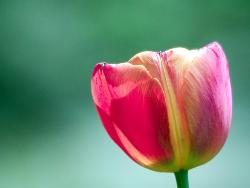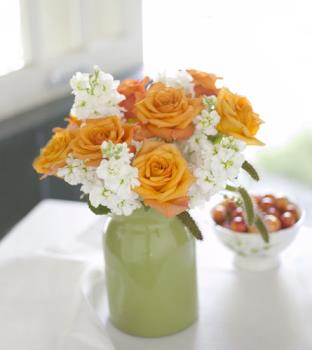do you like flowers? which flower you most like?
By ishqvishq
@ishqvishq (1021)
India
14 responses
@narendramodi17 (86)
• India
20 Nov 06
very odd choice ,though people generally like roses , you like lotus ,their must be some good reason behind it , is there any?
@ishqvishq (1021)
• India
15 Dec 06
yes you know lotus is growing on dust but never got bed so i m inspired with it and try to never wrong may be i will do this
@dattatray (893)
• India
13 Nov 06
I love flowers.. but there is no such specific flower that i can name.. i love all of them...
@KrishnaVeera (4133)
• India
20 Nov 06
I like all types of flowers especialy mysore malligi, U know this flower once U visite to mysore Karnataka then U come to know how it is ok friend,
@prashant_ashar (309)
• India
20 Nov 06
I like roses a lot. Just to give brief idea on roses .I hope it will help
Wild Roses - The wild roses includes the species listed above and some of their hybrids.
Old Garden Roses - Most old garden roses are classified into one of the following (ordered by approximate age - oldest first):
Alba - Literally "white roses", derived from R. arvensis and the closely allied R. alba. These are some of the oldest garden roses, probably brought to Great Britain by the Romans. Once-flowering. Examples: 'Semi-plena', 'White Rose of York'.
Gallica - The Gallica roses have been developed from R. gallica which is a native of central and southern Europe. They flower once in the summer. Examples: 'Cardinal de Richelieu', 'Charles de Mills', 'Rosa Mundi' (R. gallica versicolor).
Damask - Robert de Brie is given credit for bringing them from Persia to Europe sometime between 1254 and 1276. Summer Damasks (crosses between Gallica roses and R. phoenicea) bloom once in summer. Autumn Damasks (Gallicas crossed with R. moschata) bloom later, in the autumn. Examples: 'Ispahan', 'Madame Hardy'.
Centifolia (or Provence) - These roses, raised in the seventeenth century in the Netherlands, are named for their "one hundred" petals. Once-flowering. Examples: 'Centifolia', 'Paul Ricault'.
Moss - Closely related to the centifolias, these have a mossy excrescence on the stems and sepals. Once-flowering. Example: 'Comtesse de Murinais', 'Old Pink Moss'.
China - The China roses brought with them an amazing ability to bloom repeatedly throughout the summer and into late autumn. Four China roses ('Slater's Crimson China', 1792; 'Parsons' Pink China', 1793; 'Hume's Blush China', 1809; and 'Parks' Yellow Tea Scented China', 1824) were brought to Europe in the late eighteenth and nineteenth centuries which brought about the creation of the repeat flowering old garden roses and later the modern garden roses. Examples: 'Old Blush China', 'Mutabilis'.
Portland - These are named after the Duchess of Portland who received (from Italy in 1800) a rose then known as R. paestana or 'Scarlet Four Seasons' Rose' (now known simply as 'The Portland Rose'). This group was developed from that rose. Repeat-flowering. Example: 'James Veitch', 'Rose de Rescht', 'The Portland Rose'.
Bourbon - They originated on l'Île de Bourbon (now called Réunion). Probably the result of a cross between the Autumn Damask and the 'Old Blush China'. Introduced in France in 1823. Repeat-flowering. Examples: 'Louise Odier', 'Mme. Pierre Oger', 'Zéphirine Drouhin'.
Hybrid Perpetual - The dominant class of roses in Victorian England, they were derived to a great extent from the Bourbons. Repeat-flowering. Examples: 'Ferdinand Pichard', 'Reine Des Violettes'.
Tea - The result of crossing two of the original China Roses ('Hume's Blush China' and 'Parks' Yellow Tea Scented China') with various Bourbons and Noisette roses. Somewhat more tender than other old garden roses (most likely because of R. gigantea in the ancestry of the Parks rose), teas are repeat-flowering roses although their fragrance is not always a tea scent. Example: 'Lady Hillingdon'.
Bermuda "Mystery" Roses - A group of several dozen "found" roses that have been grown in Bermuda for at least a century. The roses have significant value and interest for those growing roses in tropical and semi-tropical regions, since they are highly resistant to both nematode damage and the fungal diseases that plague rose culture in hot, humid areas, and capable of blooming in hot and humid weather. Most of these roses are likely Old Garden Rose cultivars that have otherwise dropped out of cultivation, or sports thereof. They are "mystery roses" because their "proper" historical names have been lost. Tradition dictates that they are named after the owner of the garden where they were rediscovered.
Miscellaneous - There are also a few smaller classes (such as Scots, Sweet Brier) and some climbing classes of old roses (including Ayrshire, Climbing China, Laevigata, Sempervirens, Noisette, Boursault, Climbing Tea, and Climbing Bourbon). Those classes with both climbing and shrub forms are often grouped together.
Modern Garden Roses - Classification of modern roses can be quite confusing because many modern roses have old garden roses in their ancestry and their form varies so much. The classifications tend to be by growth and flowering characteristics, such as "large-flowered shrub", "recurrent, large-flowered shrub", "cluster-flowered", "rambler recurrent", or "ground-cover non-recurrent". Many of the most popular modern cultivars can however be assigned to one of these two groups:
Hybrid Tea - The favourite florist's rose, with typically one to at most five or six large flowers per stem, the flower with numerous tightly arranged petals with reflexed tips (see photo, right). They are favoured in small gardens in formal situations, and for buttonhole roses. Examples: 'Peace', 'Mr. Lincoln'
Floribunda - Flowers often smaller, in large clusters of ten or more (often many more) on each stem. These tend to give a more prominent display from a distance, so are more often used in large bedding schemes in public parks and similar spaces. Examples: 'Dainty Maid', 'Iceberg', 'Tuscan Sun'.
@Phlamingho (7825)
• Denmark
20 Nov 06
No I hate them. I'm terrible allergic to pollen, so I try to stay away from flowers :-)
@kristalynnd1 (23)
• United States
20 Nov 06
I like the white lily the best. roses are so original. everyone says roses.
I like the lily because of it's beauty, it's a unique flower in my eyes.





















